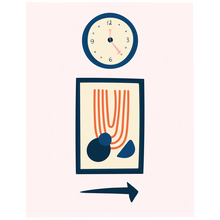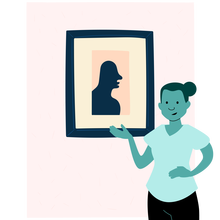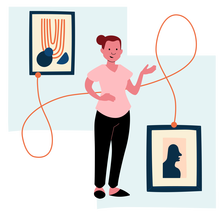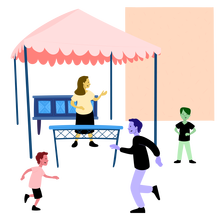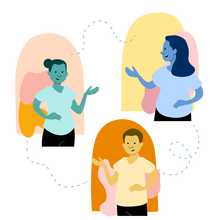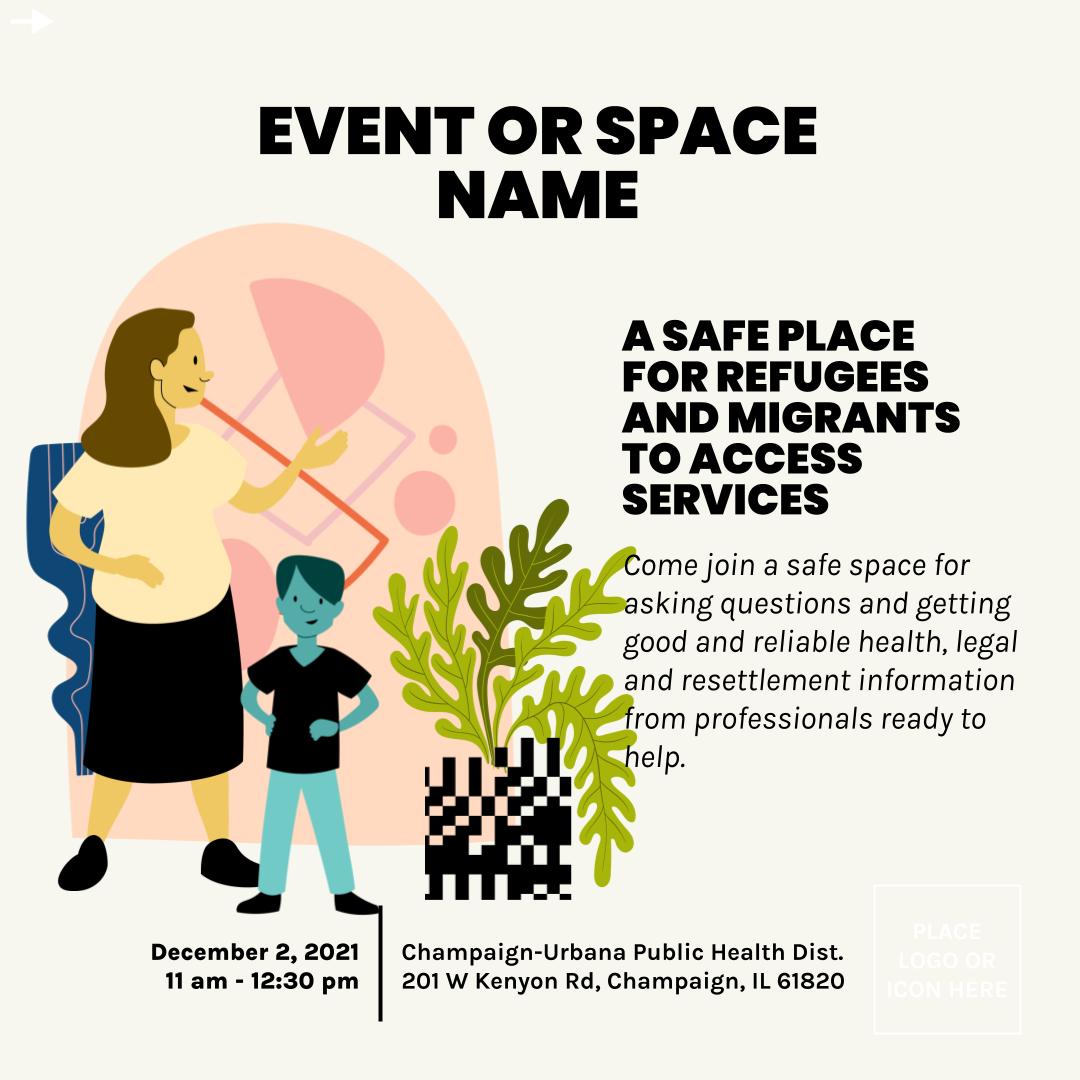
Why Space Design Matters
The pandemic has underscored the importance of trusted relationships, especially in many refugee, immigrant and migrant (RIM) communities. Moving forward, there is an opportunity to shape future public health efforts with what we have learned from the pandemic, ultimately changing systems to serve these communities better.
One way to change systems is to ensure spaces are set up to honor people in RIM communities and support the trusted relationships that are needed to have conversations about healthcare that ultimately lead to behavior change. Earning clients’ trust begins as soon as they enter a space; it must feel welcoming and relatable in order to create a sense of belonging and safety. As staying up to date on COVID-19 boosters and catching up on routine vaccinations becomes more important, having a thoughtfully designed space can ultimately support healthier communities.
Follow these guidelines to build your own inclusive spaces that will better serve the public health and healthcare needs of people in RIM communities. These tips consider everything from the entry point into the physical space to the interactions patients have once inside.

Clients start to build trust and comfort on arrival
Clients seeking healthcare are often dealing with complex issues. Welcoming them into the space will make them feel safe. This is especially helpful for someone learning about healthcare in the U.S. for the first time.

Clients confidently navigate the space
Clients may not be prepared to take in a lot of information and long descriptive texts. Providing the right amount of direction at the right time helps people get where they need to be without feeling overwhelmed.

The space becomes versatile to address varying needs
It’s important to be able to adapt and change for evolving needs and different events, such as vaccination clinics and COVID-19 information sessions operating simultaneously.

The space becomes a community hub
The space can be used as a mechanism to foster rituals and ways of collaborating. The more staff and organizations are connected to a shared purpose and have built trust with each other, the more they can work together to provide better services for RIM communities.
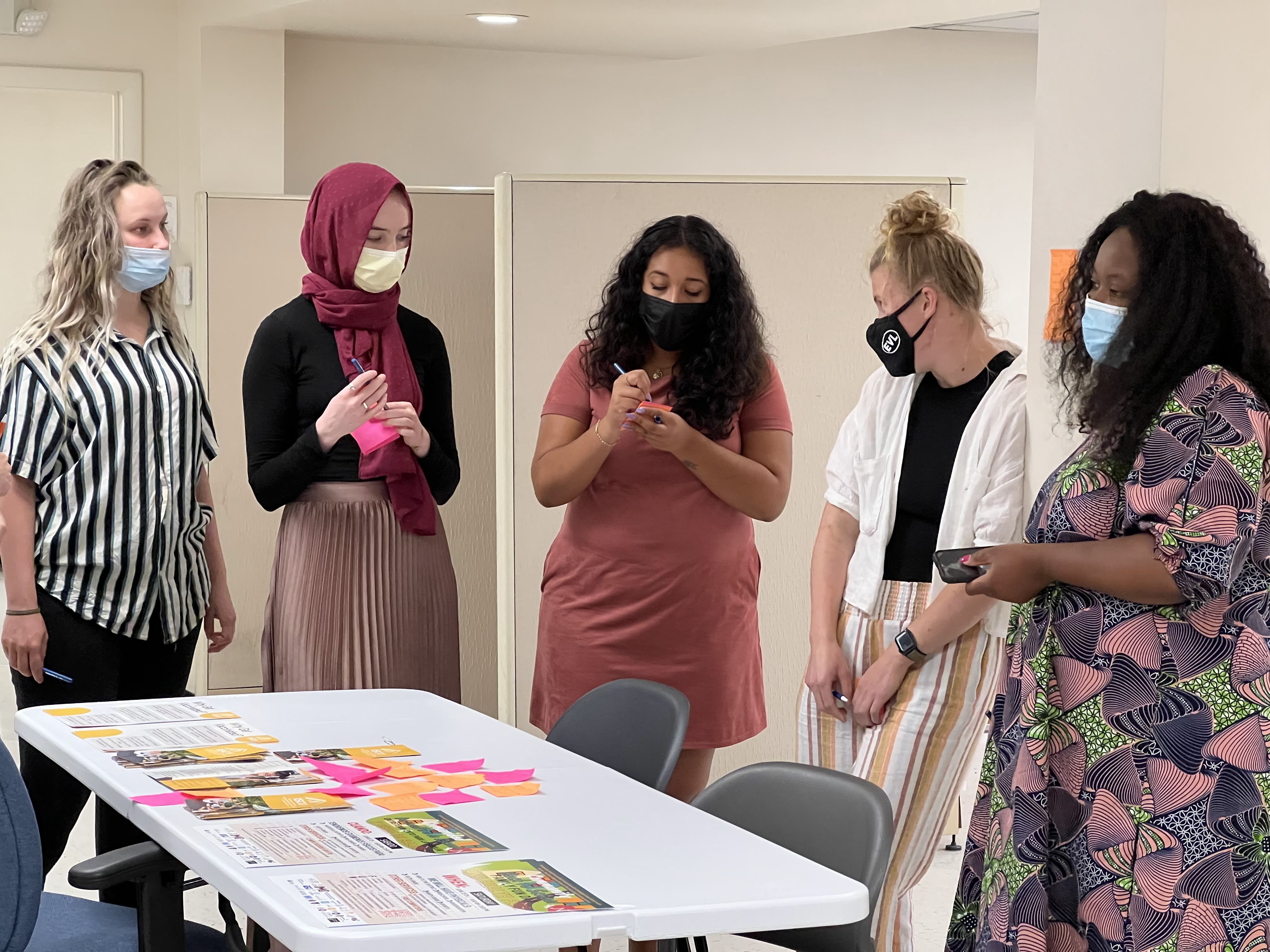
Champaign-Urbana Public Health District (CUPHD)
The Champaign-Urbana Public Health District (CUPHD) sought to improve their Immigrant Cooperative in order to support innovative COVID-19 prevention strategies in RIM communities. In May 2022 they began working with IDEO.org and NRC-RIM to redesign their physical space.
The Immigrant Cooperative consists of multiple organizations that provide an array of services to the community, including a free health clinic, immigration and legal services, social support services, and more. The organizations in this cooperative are all invested in improving health outcomes for the immigrants and refugees they serve. To do this, they needed a space that was welcoming, easy to navigate, and had a range of spaces for work, connection, privacy, and collaboration.
To ensure the community’s needs were reflected in the design of the space, we spent time listening to and learning from the Immigrant Cooperative’s constituents. We interviewed clients and staff members, observed the space in action, and hosted co-design activities with the people who work there and use the services.
The redesigned space will contribute to overall improved public health outcomes, specifically around vaccine uptake.
Goals
- Reach: More people entering the space
- Trust: More people feeling comfortable and confident with the services offered (including vaccine clinics)
- Uptake: More people seeking and receiving services (including vaccines & other public health services)
Identify what clients need to know and when information should be presented to them.
Limiting your signage to only information that is necessary (opening hours, service keywords) can help clients better navigate your space. Sharing too much information, like comprehensive lists of services and a mission statement, can result in your clients feeling confused or overwhelmed.
Use visuals and simple phrases to create attractive multilingual posters that are easily understood.
Keeping text to a minimum (using keywords) and using visuals can be inclusive for clients at all literacy levels. Photography and illustrations are popular in many RIM communities, and are preferred over iconography, which can have varied meanings due to cultural differences.
Choose colors to define a consistent, coded way to navigate the space.
Maximizing the visibility of signage helps clients quickly locate desired services. Color-coding different organization or departments can help clients quickly and easily find them.
Use this template to create simple and intuitive signage for your space.
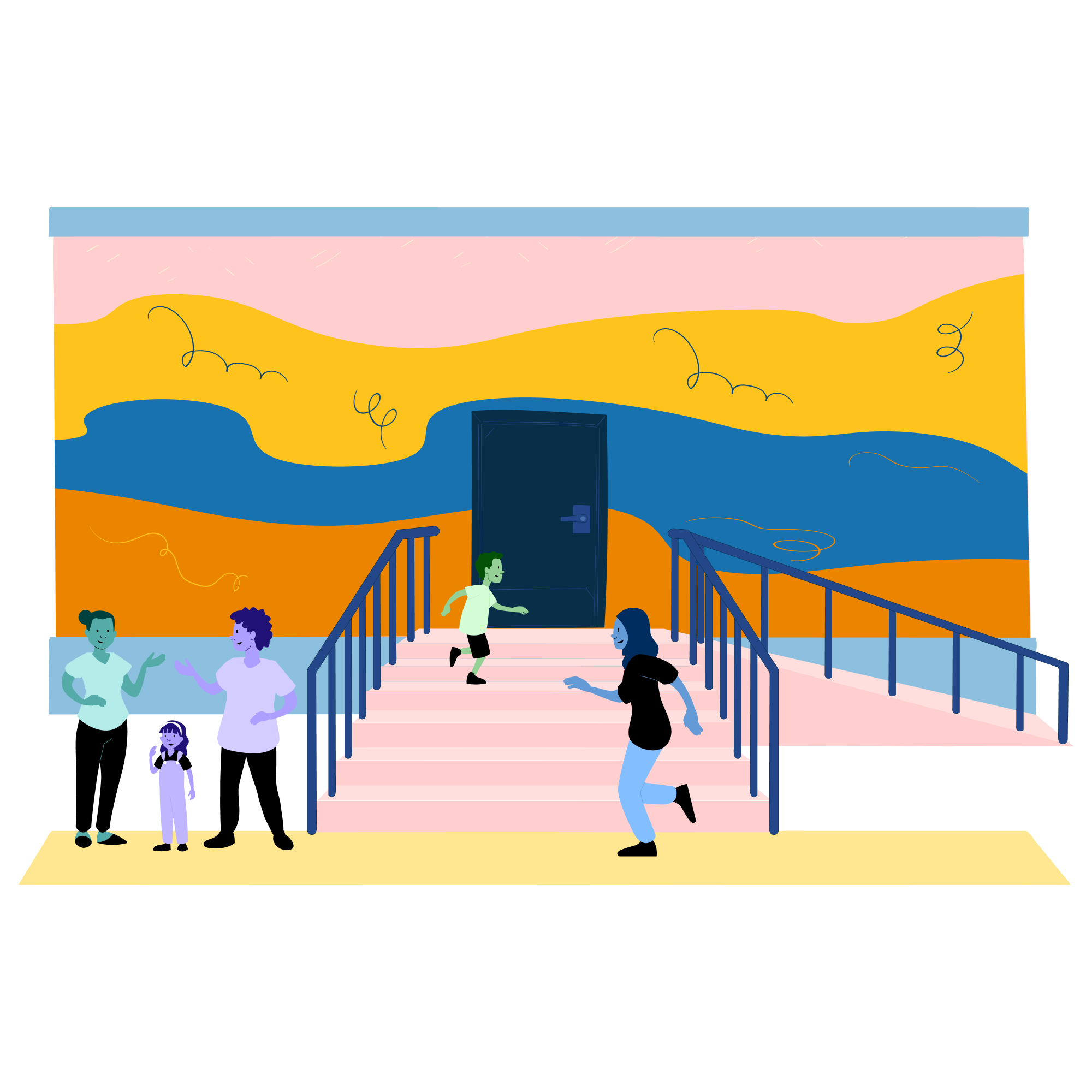
Identify one main entrance to your space and mark it clearly.
Ensure your building’s entrance is easy to find and accessible regardless of which transportation method clients choose. Indicate the location of the accessible entrance, even if it’s a different one.

Encourage personal connection.
Position a staff member or volunteer at a reception desk—It’s more personal for clients to connect with another person upon arrival. If staffing someone for this role is not possible, consider using clearly marked doorbells so clients aren’t waiting for a long time unattended.
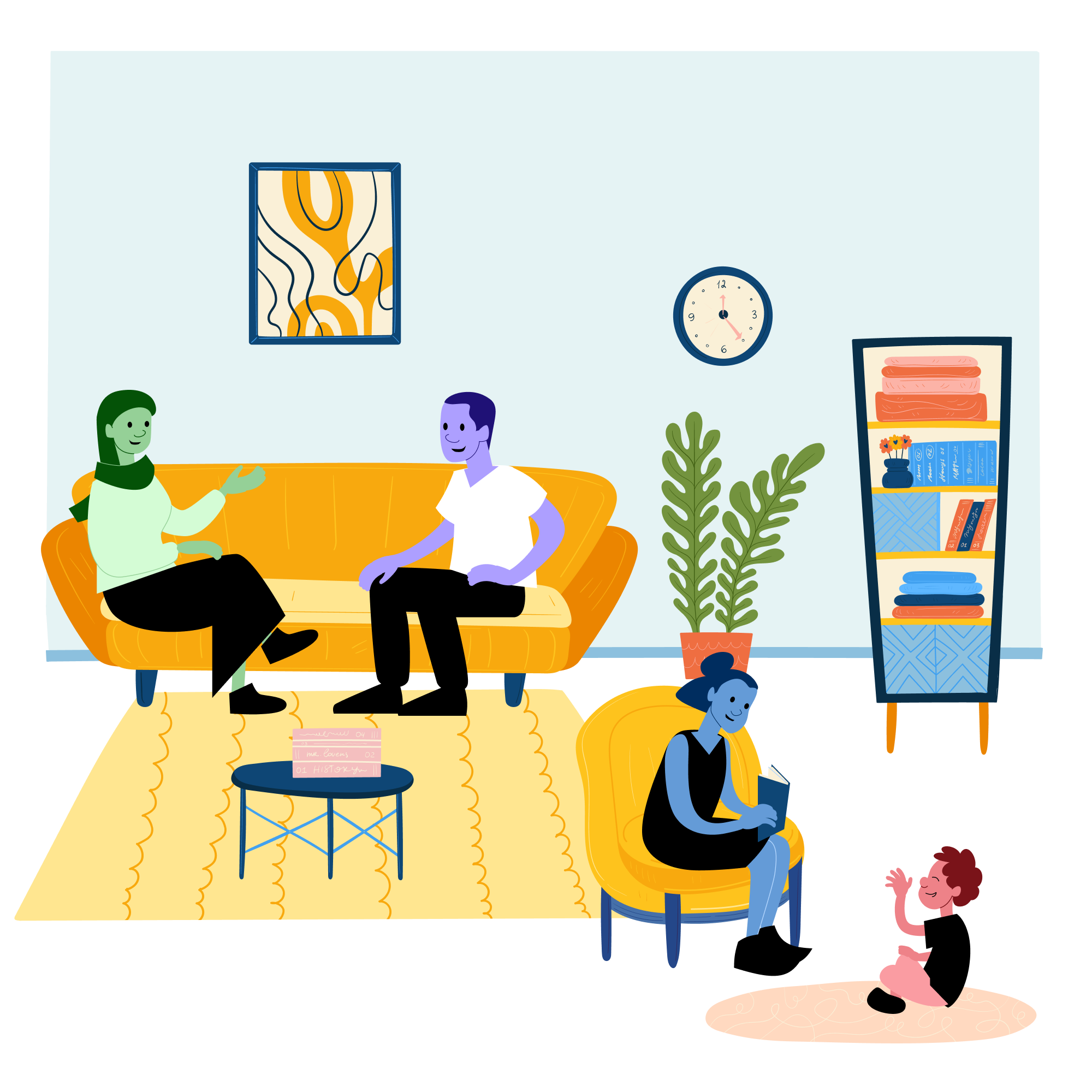
Create a comfortable and calming waiting area.
Include things like seating, entertainment, a water dispenser, and a TV that keeps clients informed of other services offered in the space. This dedicated area creates a grounding way for clients to learn the environment.
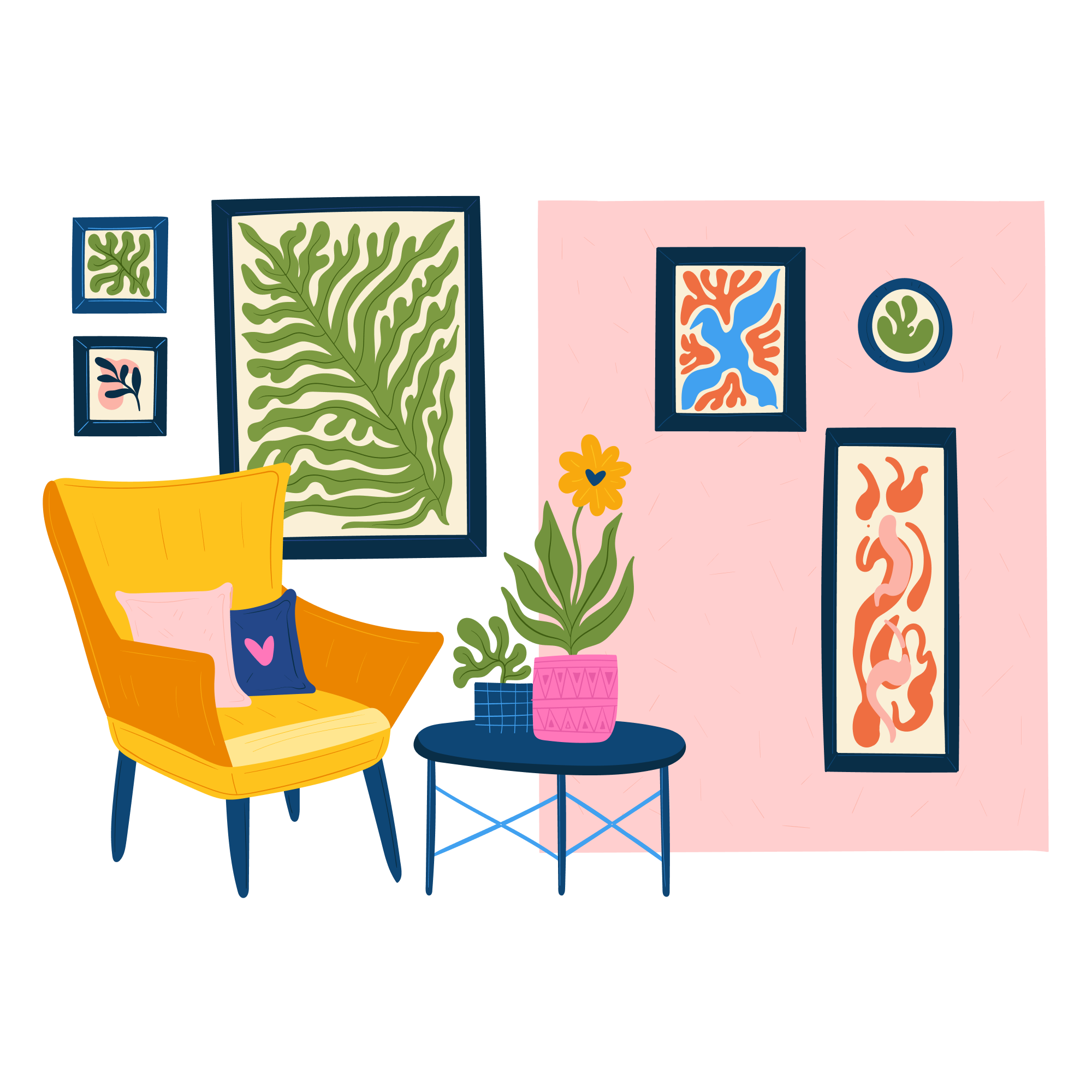
Add photography prints of people, culture and nature.
Include photography in the space that your clients and community would identify with. CUPHD clients have said that seeing things from their culture can help make the space feel more relatable. Images of nature create a sense of calm and relaxation, especially if you’re unable to keep actual plants in the space.
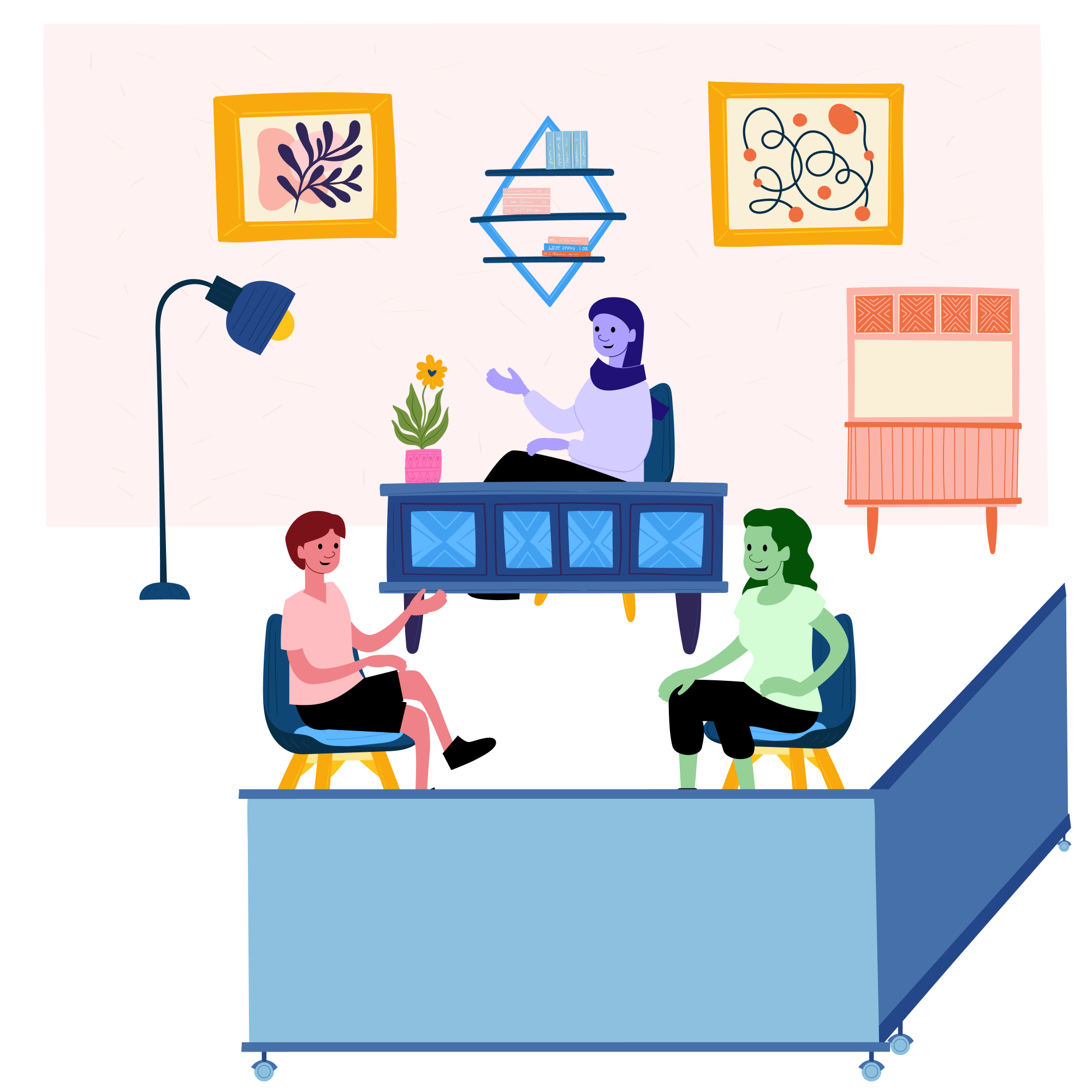
Create semi-private spaces for confidential conversations using privacy booths.
Have semi-private booths spaced apart at a comfortable distance. Even without meeting rooms, these can be used in open areas so that clients feel comfortable discussing matters that they do not want the rest of their community to learn about.

Use furniture that can be moved or stored to create flexibility in the use of your space.
Figure out the main functions you’d like your space to serve, and the different ways furniture can be rearranged for different needs and events.
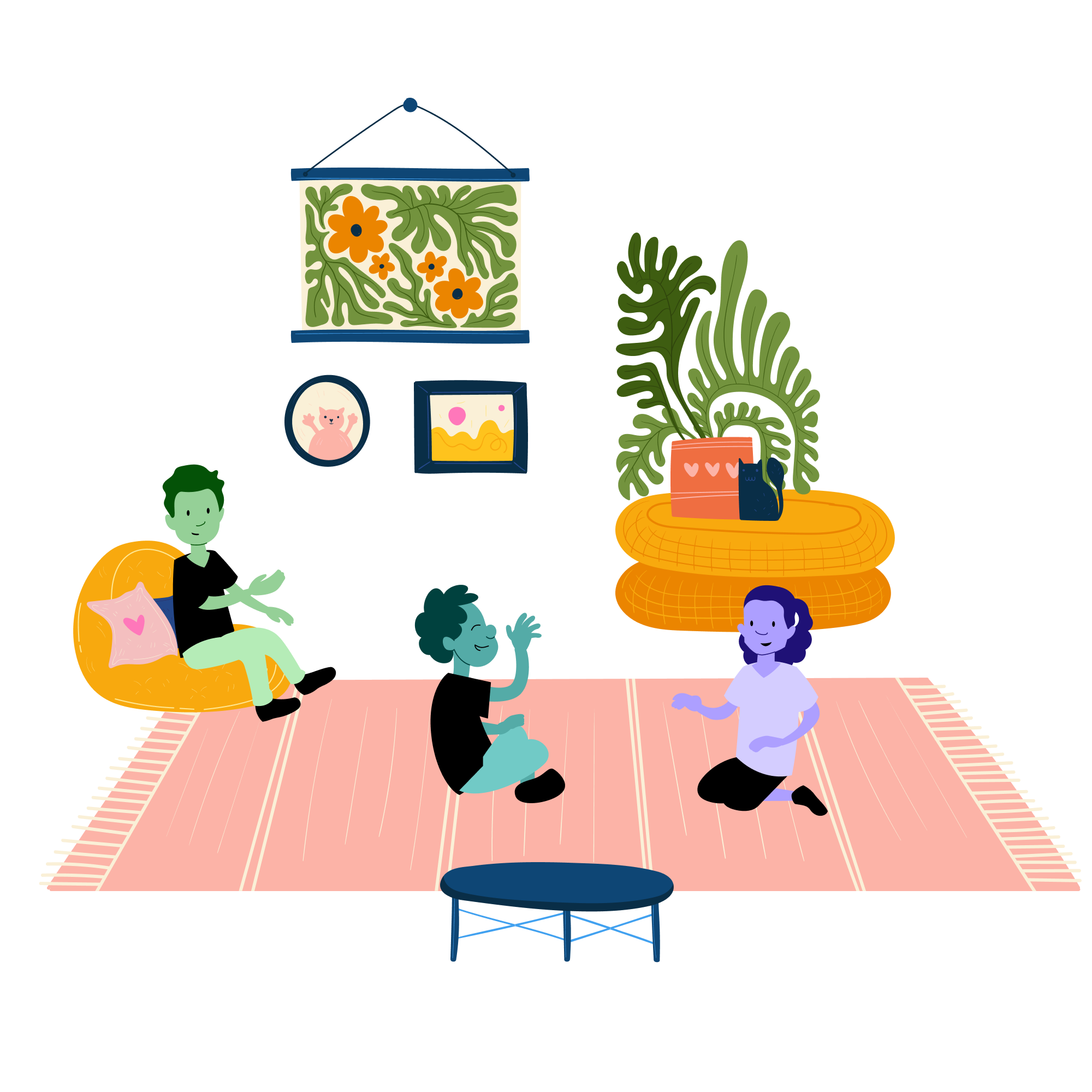
Create an enclosed kids’ area.
The area can be filled with kids’ entertainment, such as toys, games, art, and books. The enclosed area keeps kids safe from wandering off. Ensure caregivers have a visible sightline to the area so they feel comfortable watching the children.
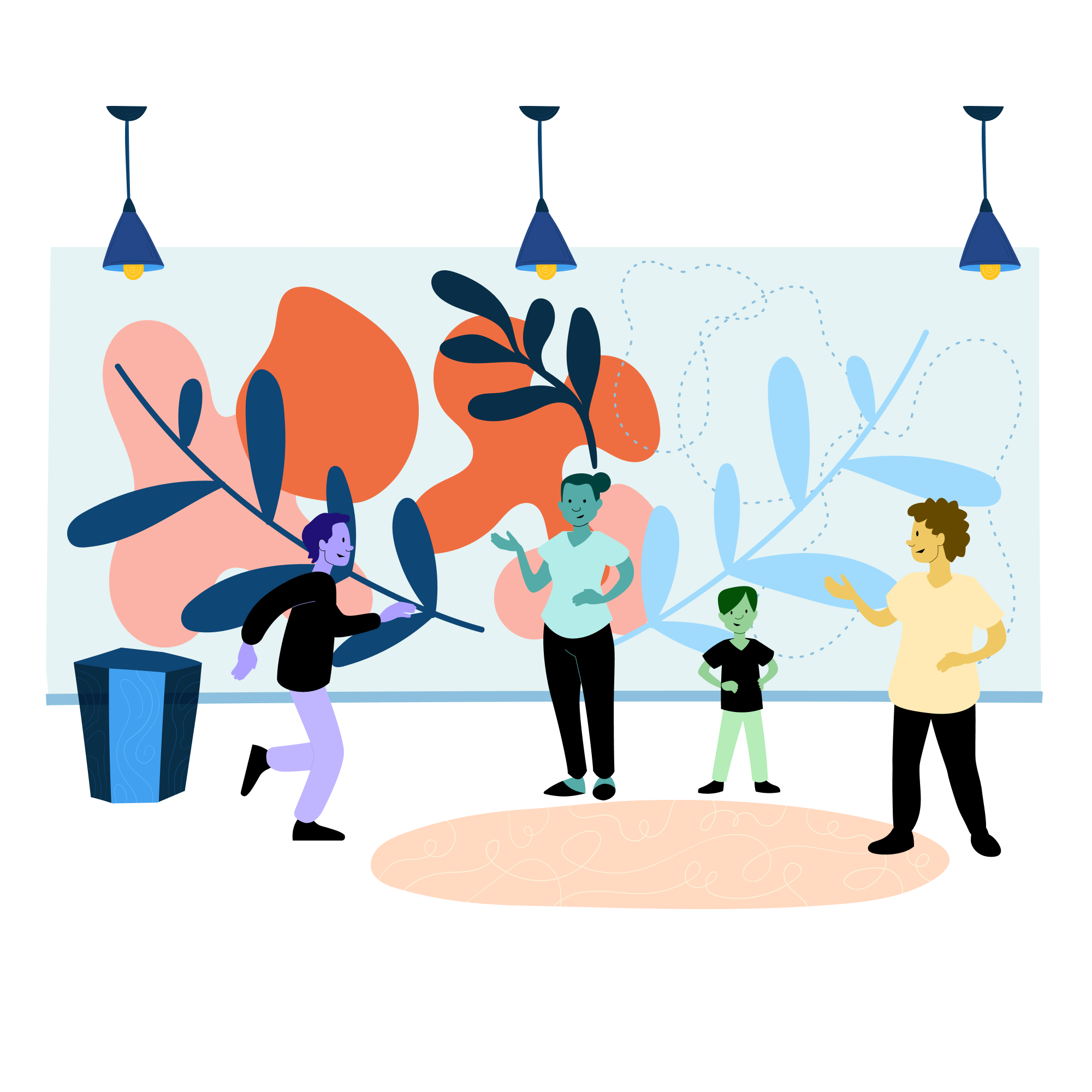
Feature community artwork.
Commission a local artist to create a mural. Integrating vibrant, bold artwork from local artists fosters community collaboration and connection. The mural could serve as a visual landmark or a way to celebrate the services offered by your organization.
Cultivate trust through existing leaders of RIM communities.
Leveraging the reach and access of highly trusted individuals helps build credibility.
Elevate health events with food and cultural activities.
Clients will discover your space through enjoyable experiences. These events are best attended when the community is involved directly in organizing and planning.
Use popular platforms to share news and events happening in your space.
Posting content on platforms that many clients engage with regularly increases visibility and inspires trust.
Getting started
Use this template to invite people in RIM communities to events happening in your space. You can ask trusted members of the community to share the message within their respective channels to leverage the trust they have already built.
You can also create an eye-catching invite for social media with this Event Invite Template
We’re hosting a health event for the [_____] community and want to invite you.
🩺💊 [SPACE OR ORGANIZATION’S NAME HERE] 🩺💊
is a safe space for migrants and refugees from the [_____] community to come together, connect, rest and to discuss issues that affect the whole family’s health.
The space is free to visit and childcare is provided. It’s organized by [your organization name and description].
🌮🫖Food and drinks will be provided. 🌮🫖 *** Optional***
Would you want to join our gathering?
When:
[date], [time] (tentatively)
Where:
[venue address]
Respond with:
👍🏾Yes, please
👎🏾No, thanks
Estamos organizando un evento de salud para la comunidad [_____] y queremos invitarle.
🩺💊 [SPACE OR ORGANIZATION’S NAME HERE] 🩺💊
es un espacio seguro para que los inmigrantes y refugiados de la comunidad [_____] se reúnan, se relacionen, descansen y platiquen acerca de cuestiones que afectan a la salud de toda la familia.
Este espacio es gratuito y dispone de servicio de guardería. Está organizado por [your organization name and description].
🌮🫖Habrá alimentos y bebidas. 🌮🫖 *** Opcional***
¿Le gustaría formar parte de nuestra reunión?
Cuándo:
[date], [time] (tentativamente)
Dónde:
[venue address]
Responder con:
👍🏾Sí, por favor
👎🏾No, gracias
Nous organisons un forum sur la santé au profit de la communauté [_____] et nous voulons vous inviter.
🩺💊 [SPACE OR ORGANIZATION’S NAME HERE] 🩺💊
est un endroit sûr dans lequel les migrants et les réfugiés de la communauté [_____] peuvent se rassembler, se tisser des liens, se reposer, et discuter des défis sanitaires qui affectent la santé de la famille entière.
L'entrée est gratuite et nous offrons un service de garderie. Il est organisé par [your organization name and description].
🌮🫖Nous offrons de la nourriture et des boissons. 🌮🫖 *** Facultatif ***
Voudriez-vous prendre part à notre rencontre?
Quand:
[date], [time] (provisoirement)
Où:
[venue address]
Répondre par:
👍🏾Oui, je vous en prie
👎🏾Non, merci
Chúng tôi đang tổ chức một sự kiện sức khỏe cho cộng đồng [_____] và muốn mời bạn.
🩺💊 [SPACE OR ORGANIZATION’S NAME HERE] 🩺💊
là một không gian an toàn cho những người di cư và tị nạn từ cộng đồng [_____] đến gặp gỡ nhau, kết nối, nghỉ ngơi và thảo luận về các vấn đề ảnh hưởng đến sức khỏe gia đình.
Không gian tham quan miễn phí và cung cấp dịch vụ chăm sóc trẻ em. Nó được tổ chức bởi [your organization name and description].
🌮🫖Thức ăn và đồ uống sẽ được cung cấp.🌮🫖 *** Tùy chọn***
Bạn có muốn tham gia buổi họp mặt của chúng tôi không?
Khi nào:
[date], [time] (dự kiến)
Nơi nào:
[venue address]
Trả lời cho:
👍🏾Vâng, làm ơn
👎🏾Không, cảm ơn
موږ د () ټولنې لپاره د روغتیا پیښې کوربه توب کوو او غواړو تاسو ته بلنه درکړو.
🩺💊 [SPACE OR ORGANIZATION’S NAME HERE] 🩺💊
د [_____] ټولنې څخه د مهاجرینو او کډوال لپاره یو خوندي ځای دی چې سره یوځای شي، وصل شي، آرام شي او د هغو مسلو په اړه بحث وکړي چې د ټولې کورنۍ روغتیا اغیزه کوي.
د لیدو لپاره ځای پرته له کوم لګښت څخه دی او د ماشومانو پاملرنه هم پرته له کوم لګښت څخه چمتو کیږي. لخوا ترتیب شوی دی [your organization name and description].
🌮🫖 مشروب او خوراک به هم ورکړل شي. 🌮🫖 *** اختیاري***
ایا تاسو غواړئ زموږ په غونډه کې ګډون وکړئ؟
كله:
[date], [time] (موقتي)
چیرته:
[venue address]
ځواب ورکړئ:
👍🏾هو، ولې نه
👎🏾نه، مننه.
